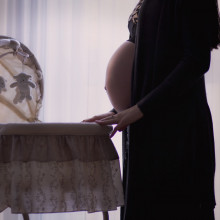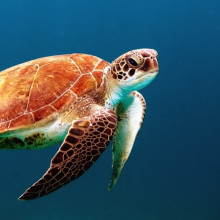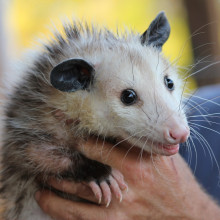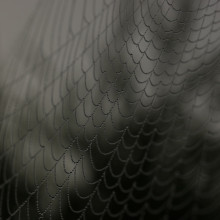We might joke about the battle of the sexes, but it turns out that this is actually true - at least for a hundred or so imprinted genes. Plus, what opossums can teach us about sex, reporting back from a very special scientific meeting, and a superhero-styled gene of the month.
In this episode

01:08 - Spring is in the air
Spring is in the air
with rebecca Oakey, King's College London
Kat Arney has been off on her travels again, this time to a conference at Warwick University - organised by the Genetics Society, the BSBD and BSCB - taking advantage of the glorious spring sunshine by spending three days in windowless lecture theatres. But it was all worth it to hear about very latest advances from the world of biological research. On the first night Kat headed to the bar to catch up with one of the meeting organisers, Professor Rebecca Oakey from King’s College London, to find out what to expect over the next three days.
Rebecca - Well, the soul of this meeting is a real combination of the British Society for Developmental Biology, the British Society of Cell Biology, and the Genetics Society bringing together themes that overlap and complement each other.
Kat - So this is really covering most of the aspects of life from their genes that are controlling cells, the cells themselves and how they're behaving, and then how that’s kind of working as animals and plants grow.
Rebecca - Absolutely and all of that underpinned obviously by genetic mechanisms and molecular biology. Together, that just brings the picture into sharp focus around everything from nucleic acids to growing organisms.
Kat - What are the particular themes that you're really interested in from the Genetics Society point of view?
Rebecca - This time, we’ve been able to host the Genetics Society lecture for 2017 which was given by Marisa Bartolomei on Genomic Imprinting. That’s been a fantastic overview of her life’s work plus a lot of work of those around her in the field.
Every year, the Genetics Society president is able to nominate a medal. It’s called the Mendel medal and Wendy Bickmore has nominated famous plant geneticist David Baulcombe from Cambridge.
Kat - So that’s two lectures to really look forward to. But there's lots and lots of talks. Are there sort of broad themes that I should be looking out for?
Rebecca - Well, the two themes that appeal to me the most I guess are the epigenetics sessions where we have a really fantastic lineup of people working on epigenetics from metabolism through to regulatory networks and genome architecture and transcription regulation in multiple organisms such as C. elegans.
This time I guess, the other sessions that I'm particular interested in are on unusual model systems or tractable new systems which include things like oak trees and ash trees. We’re also looking at social insects such as bees and ants, bringing together some things which we perhaps wouldn’t normally think about as being tools in genetics or cell biology.
Kat - We’re used to things like C. elegans, the little tiny nematode worm, mice, fruit flies, all these kind of stuff. Can we expect to see some maybe quite wacky stuff? Is that what you're looking forward to in these sessions?
Rebecca - I think so too. I think those trees are going to be looking really, really interesting but they're complex genomes. Some of them are partially sequenced, some of them are not sequenced. There are new ideas around thinking about organisms perhaps we haven't really been able to access before.
Kat - What are you hoping to come away with at the end of these three days?
Rebecca - I'm hoping to come away with a big context. I think context is something that we certainly miss when we go to very specialist meetings. I think broad meetings really challenge us to try and understand things we didn’t really know how they fitted into the normal things we think about. That’s really important for our trainees, for our PhD students post doctor but actually really super important for even more sophisticated researchers too.
Kat - We’re here at the first evening reception. People are chatting away in the bar, lots of conversations starting already. For me, this is always the heart of a conference, the conversations around it, rather than necessarily the talks. Is that what you're hoping for as well?
Rebecca - I think distilling the talks in the bar is really important. It sets off great ideas, potential collaborations, and just again, bringing that context to what we sometimes really narrow down in our own labs and lives.
Kat - Professor Rebecca Oakey from King’s College London, who was part of the meeting’s scientific organising committee on behalf of the Genetics Society.

05:02 - Mum’s genes, dad’s genes
Mum’s genes, dad’s genes
with Marisa Bartolomei, University of Pennsylvania
As Rebecca mentioned, one of the first talks we heard was from Marisa Bartolomei, Professor of Cell and Developmental Biology at the University of Pennsylvania, who gave the 2017 Genetics Society Medal Lecture about her work on genomic imprinting. Kat Arney started by asking her to explain exactly what imprinting actually is.
Marisa - Genomic imprinting is a process that affects only a small number of genes. It’s mammalian. The bottom line of genomic imprinting is that these small number of genes are only expressed either from their maternal allele or their paternal allele – the copy they inherited from mum or the copy they inherit from dad. The other copy is repressed.
Kat - For most of the genes, we get one copy from mum, one copy from dad and effectively, it’s a backup system. If one breaks the other one works. But these genes, it’s only mum’s copy or only dad’s copy. Is that in all cells that it’s only mum or dad’s copy that is switched on and the other one is switched off?
Marisa: So for certain genes, it’s in all cells, but for other genes, there is tissue specific imprinting. So for example, there may only be expression from one of the parental copies only in the brain or only in the placenta, and other tissues normally have both copies. So there's a lot of different variations on this. But for other genes, it’s everywhere. Everywhere the gene is expressed, it’s only expressed from one of the copies. If it’s the mother’s copy, it’s always the mother’s copy.
Kat - What sort of genes are we talking about that are only active if they come from mum or only active if they come from dad? Are there common traits between these sort of genes?
Marisa - Yes. So I think when we first started studying it and thinking about it, we thought that most of these genes were going to be growth regulatory genes and genes that were important in the embryo and the foetus. But as time has gone on, we found genes that have other properties that are beyond foetal growth that are properties in behaviour, properties in postnatal energy homeostasis.
So, their properties are pretty diverse and you can no longer just say, well, these are growth regulatory types of genes. It may also be that there are only a few whose imprinting is important and that others have gone along as bystanders. They were just in the region of an imprinted gene and they went along.
But at this point, it’s not very easy for us to tell. That said, we can say that imprinting is pretty highly conserved between mice and humans, so there must be something there that maintains that selection for imprinted genes.
Kat - I do remember the kind of idea that the genes that are active from dad are the sort of genes that make foetuses grow really big because they're trying to suck all the resources out of mum and then the genes that are expressed from the mum’s copy are the ones that are trying to supress that. But you're saying that it’s kind of a bit more complicated than that.
Marisa - I mean, I think it’s a bit more complicated although that is still the prevailing theory and people who study imprinting from an evolutionary perspective really seem to focus on those types of traits. But you could say that behavioural traits are also something that’s important for maternal or paternal care.
We’re not really that clear on the evolutionary purpose of imprinting but we do know it’s there and we’re interested in studying what these genes are, how they're regulated and what the consequences there are to human health.
Kat - So let’s unpack that a little bit more. What do we know about how this is controlled, how in these cells, it’s only the copy that comes from dad is active and mum’s copy is off, or vice versa when only mum’s copy is on and dad’s copy is switched off? What are the molecular nuts and bolts that are making that activity or silencing happen?
Marisa - One of the things we know for certain is that most imprinted genes are found grouped in clusters in the genome. We also know that they're regulated by these small bits of DNA, maybe only one kilobase in length. These bits of DNA seem to have epigenetic modifications that are put on in a parental specific way. So, there may be DNA methylation or chromatin modifications.
They come on either in the father’s germline or the mother’s germline. So at the time when eggs and sperm then meet for the fertilisation event, they already have their maternal specific marks or their paternal specific marks. Once they go into a fertilised egg, they're saying, “I came from mum. I came from dad. I’ll be active. I’ll be repressed.”
And so, it’s the germline where a lot of these events of imprint establishment take place and then after fertilisation, they're read by the normal machinery that reads everything else and the genome to turn things on, turn things off during development.
Kat - I always like to think of these epigenetic modifications as almost like sticky notes or Post-It notes. So there, you're saying that they're being put on in the eggs. When mums are making eggs, it’s like, “Okay, these genes all came from me” and in dad’s sperm is like, “These genes all came from me.” But then if the embryo then when it grows up and make eggs or sperm depending on whether it’s a male or female, presumably, all those marks have to be taken off again and reset.
Marisa: Right. Then the sticky notes are sort of torn up, disposed of and then as they go through becoming eggs or becoming sperm, they're saying, “Okay, they know I'm an egg. I'm a sperm” partly by their genetic composition part, by their environment. And they say, “Okay, I'm an egg now. I will put the marks on during growth of the oocyte and right before ovulation.”
Whereas if they’re in the sperm, they’ll say, “Okay, I know I'm in the male germline. I will put on my marks.” And so, they know that but they take what's present in the somatic tissue, erase it and restart again. And that’s really critical for the lifecycle of these imprints.
Kat - So we have this cycle of imprinting of marks coming from mum, marks coming from dad, making an embryo with mum’s genes on or dad’s genes on, wiping them out, starting again, round and round, and round. So we know that that’s kind of how it works normally. But what about some situations where it’s gone wrong? Are there diseases that are associated with problems in this imprinting?
Marisa - So, there are quite a few imprinting disorders such as the overgrowth and undergrowth disorders Beckwith-Wiedemann syndrome and Silver-Russell syndrome as well as some neural behavioural disorders such as Angelman syndrome and Prader-Willi syndrome as well as other imprinting disorders. There are cases where there's just deletions or mutations in the expressed copy of a gene that leads to this disorder.
But there are also cases of which depending upon the disorder how prevalent they are where they're just mistakes in that marking of the imprint that occurs in the germline or maybe something happens during gametogenesis where it’s erased a little bit or after fertilisation, something happens. It’s not clear but what we can see in some of these children that have Beckwith-Wiedemann or Silver-Russell, they’ll have a mosaic pattern in their cells so that some other cells have their DNA methylation that looks right, normal, and some cells have lost it.
And so, we don’t know if there's something that happens very early in development that leads to this if there's an environmental perturbation. One of the things that my lab as well as few others have studied is the effect of assisted reproductive technologies on imprints. Using a mouse model, we have shown that some of the techniques used in assisted reproduction can lead to some mistakes in maintaining appropriate imprints that could lead to these disorders.
Kat - Basically IVF, in vitro fertilisation.
Marisa - Correct and there's been an association with increased incidence of Beckwith-Wiedemann syndrome. So the environment that an egg or a sperm, or an early embryo in can be very important for appropriate imprints.
Kat - Now that we know that there are these imprinted genes and starting to understand how they work, what are still the big questions? What do we still really need to know?
Marisa - I think there still are a lot of big questions and that is, how are these genes recognised in the germline to be modified or marked with their parental origins to their imprint. That’s another thing that we and others are still working on. So there still are a lot of really important questions to answer and again, since it affects human health, it is something that we really want to drill down.
Kat - Marisa Bartolomei from the University of Pennsylvania.

14:16 - Anti-ageing treatment… for mice
Anti-ageing treatment… for mice
A new paper in the journal Cell this month prompted a flurry of interest from people wanting to turn back the clock and erase the signs of ageing. Researchers at Erasmus University Medical Center in the Netherlands discovered that regular doses of a small molecule helps the body to get rid of worn-out and faulty cells, boosting the health and appearance of elderly mice.
The chemical - a tiny protein known as a peptide - works by blocking the activity of a protein called FOXO4. This usually interacts with a protein called p53 - the so-called ‘Guardian of the Genome’ - to keep elderly cells in a state known as senescence, where they stay alive but slow down and age. But if FOXO4 is blocked, then p53 kicks into action and causes these senescent cells to die.
Because FOXO4 is only active in senescent cells, the treatment is highly specific and has very few side effects, even if animals were given the chemical for more than ten months. But even though it seems to be safe in the long term (at least in lab mice), the benefits were quick to arrive. The scientists saw fur growing back in balding, ageing mice after just 10 days of treatment, with fitness benefits showing up after three weeks and improved kidney function after a month.
While the work has only been done in naturally-aged mice and also animals that have been genetically engineered to age rapidly, the researchers are planning initial human safety studies in people with brain tumours that show high levels of FOXO4. So it’s still likely to be some time before an anti-ageing drug becomes a reality.

15:60 - Sexing sea turtles
Sexing sea turtles
Researchers at Florida Atlantic University have developed a new way to determine the sex of endangered baby sea turtles, publishing their findings in the journal The Anatomical Record.
While many species use sex chromosomes - such as our own mammalian X and Y chromosomes - sea turtles do it differently.
Eggs that are incubated in warmer temperatures tend to produce females, while those laid on cooler sand are more likely to be males.
The new test focuses on measuring the levels of a protein called CIRPB, which is found in high amounts in the developing ovaries of female turtles, even at the hatchling stage, but at much lower levels in males.
When researchers compared CIRPB measurements to conventional turtle-sexing techniques, the new test had a 93 per cent success rate for loggerhead turtles and 100 per cent for leatherbacks, suggesting the test is reliable and reproducible.
As global temperatures rise, there’s evidence that this is skewing sea turtle populations in a more female direction, which could risk sending the species towards extinction if there aren’t enough males to go round.
To make things more tricky, a sea turtle’s sex isn’t obvious from its anatomy until it starts to approach sexual maturity, which can take at least a decade.
Developing this method to quickly and easily determine the sex ratios of newly hatched baby sea turtles is a vital tool for conservationists trying to track and preserve the species.

17:30 - Proteins take the heat
Proteins take the heat
Scientists at the Rensselaer Polytechnic Institute in New York have discovered how some proteins can withstand high temperatures and maintain their function while other similar structures fall apart.
Publishing their findings in the Proceedings of the National Academy of Sciences, the researchers compared the composition and structures of 15 closely-related proteins, which are all members of the thioredoxin family - these are present in all living things, from bacteria that survive in boiling hydrothermal ocean vents to those that can survive in freezing polar seas.
Nearly half of these were sequences of ancient proteins dating back more than 4 billion years, which were reconstructed using special genetic ‘archaeology’ techniques.
The team found that the difference in stability at high temperatures is mainly due to differences in how much energy is required to unfold them - reflecting the stability of the chemical and physical bonds within each protein’s structure.
Intriguingly, the scientists discovered that the ancient proteins unfolded more slowly than modern versions, in some cases 3,000 times more slowly, even though they fold up into their correct structures at the same rate. For example, in the case of two seemingly similar thioredoxins, one unfolded within seven seconds at high temperature, while another lasted for six hours.
The discovery could provide important clues for biological engineers designing enzymes or other protein molecules that can withstand the high temperatures needed for some industrial applications, suggesting that they should look back into ancient history in search of tomorrow’s new ideas.

19:27 - The joy of opossum sex
The joy of opossum sex
with Bryony Leeke, Francis Crick Institute
It’s time to hear from another of the speakers at the spring meeting - Bryony Leeke from the Francis Crick Institute in London, whose presentation was part of the ‘newly tractable systems’ strand of talks. Kat Arney couldn’t help but catch up with her afterwards to talk about the animals that she’s studying...
Bryony - So we work with opossums. They're from South America and they're about the size of a rat which makes them a very useful model animal for studying marsupial biology because they're easy to keep in the lab because they're small and they eat a normal diet just like a rat or a mouse would.
Kat - What are marsupials and why are they interesting, and how are they different from mammals like us?
Bryony - So marsupials are basically an earlier evolutionary form of mammals. They branched away from the kind of mammals that we are about 180 million years ago during evolution. They're similar in some ways. They feed their young milk and their young develop inside of them. But they're also different in that their babies are born in a much more developmentally early stage - basically, still what would look like an embryo in a mouse.
They crawl up the mother’s tummy and then attach to her nipples and get milk from outside and finish their development there. So they're very useful to study aspects of early development because they're already external to the mums. They're easy to study.
Kat - What sort of things are you trying to look at with your opossums? You're keeping them in your lab.
Bryony - Yeah, they live with us in the Francis Crick Institute in little cages and we use them to study the sex chromosomes. So in mammals like us and also in mammals that are marsupials, males have an X chromosome and a Y chromosome, and females have two X chromosomes. We’re interested in learning how those sex chromosomes have evolved. For example, how is it possible for females to have two X chromosomes and therefore, twice as many genes from the X chromosome as a male that only has one?
We know that in mice, female mice actually cope with this by turning off one of their X chromosomes so they have the same amount of X chromosome genes as in a male. We’re interested in studying how the same process might be happening in marsupials and what that can tell us about the evolution of that process.
Kat - There are some other kind of animals. There's things like duck-billed platypuses that they're not marsupials, they're not mammals, they are something else. What do we know about them?
Bryony - So those are called monotremes and they are also mammals because they feed their young with milk. But unlike marsupials and us, they lay eggs. So their babies do not develop inside of them in a womb. And they're even stranger. They actually don’t have the same sex chromosomes that we have or that opossums have. They have five X chromosomes and 5 Y chromosomes. It’s quite a confusing picture actually. There are some really great researchers in Australia who work on them, but they quite hard to study because they're quite rare, so not much more is really known about them.
Kat - In terms of understanding how this X chromosome, Y chromosome business works, what do you still want to find out about how the opossum’s X and Y chromosomes work?
Bryony - That’s a really good question. So it’s known in a mouse that the way that the X chromosome gets shut down is that one special gene makes a very, very long RNA – lots and lots of copies of it. This RNA wraps all around the chromosome that's going to be shut off basically like tying something up on a bunch of string to compact it. Our lab has found a similar gene in opossums that seems to do the same thing, but it’s not the same gene. So they’ve evolved separately throughout evolution but to do basically the same job, which is quite cool!
We’re interested in learning about what happens next. We know about the special gene that shuts things down, but in mice, there are lots of secondary and tertiary processes that then happen to make sure that the chromosomes stays turned off. These are all epigenetic processes. So we are now looking into the same kinds of processes in the opossum to see what kind of epigenetics are keeping that chromosome silent.
Kat - Bryony Leeke from the Francis Crick Institute.

23:26 - Highlights of the Genetics Society spring meeting
Highlights of the Genetics Society spring meeting
with Rebecca Oakey, King's College London
After three exhausting days of presentations - not to mention the conference disco - it was time to head home from the combined Genetics Society, BSBD and BSCB spring meeting. Kat Arney met up with Rebecca Oakey in the final coffee break to chat about her highlights, starting with the very first lecture of the whole meeting - a talk from Bonnie Bassler from Princeton University in the US about how cholera bacteria club together.
Rebecca - So Bonnie’s talk really focused on bacteria and their behaviour, how they group together in these biofilms which are groups of bacteria that arrange themselves in a way that stick to your gut and form an infection.
Just the way she presented that work, the visual tools that she used to show us about those bacteria was absolutely fantastic. I think what we really need to do is understand more about cholera because actually, cholera is a model organism for so many other nasty gastrointestinal infections.
Kat - What about some of the other big plenary talks? There was Bill Harris talking about his lifetime of work on the eye, the retina.
Rebecca - So Bill Harris really gave a fantastic personal but very scientific reflection on his work over the years where he started in California, moved to Cambridge, has been working basically on understanding the different cells in the retina by characterising them with all these beautiful different colours and fluorophores, we see a real visual picture of the anatomy of the retina.
Kat - What was lovely about that talk and some of the talks that gave more of an overview was seeing how techniques have changed. So starting from work done maybe 20, 30 years ago when you got really basic techniques and everything was so hard and so difficult. And now, you can label stuff with fluorescent dyes in all shades of the rainbow.
Rebecca - Yeah. The real visual pictures we saw in terms of those multicolour dyes and techniques for labelling cells is just fantastic. Starting off as a very, very simple technique. The anatomy is still the same but the way we can view it is so much more complicated and so much more informative.
Kat - One of the other strands in the conference has been something called newly tractable systems. What did we mean by that? What were you trying to achieve and what were some of the standout talks there?
Rebecca - So we’ve always in biology used models to study biological systems and some of those models are really well understood. Their genomes are sequenced, we know a lot about the genes that act in these organisms. They behave in standard ways, but actually, what we really want to do is sort of push that out and start looking at other organisms which are not as well understood, maybe don’t have all their genome sequenced, maybe don’t have any of their genome sequenced.
So we were really looking at bees and trees, honeybees, bumblebees, ash trees, oak trees, and really trying to push ahead the genetic sides of organisms that wouldn’t traditionally have been used in breeding experiment.
Kat - This is a Genetics Society joint meeting with a lot of epigenetics talks, getting towards being the Epigenetics Society!
Rebecca - Well, I'm afraid that was quite a heavy emphasis on epigenetics but that was good because they actually crossed all of the societies and there were epigenetics talks within every grouping. But I think we had some very good talks discussing the moving elements, the transposons and the genome which hop around. They interdigitated amongst all sorts of distant different disciplines, but were brought together I think by David Baulcombe’s talk which was a medal talk, the Genetics Society Medal talk, which was just fantastic as he talked about so many of these sort of movable elements in plants.
Kat - We’re on the last morning today. The pack lunches are being prepared. Everyone is slightly wrestling with their hangovers after an excellent disco last night. But were there any talks this morning that caught your eye?
Rebecca - There were two absolutely stunning talks. First of all, we’ve got a brand new DNA methyltransferase – DNMT 3C. We thought A and B were the end of the stories but we have a new enzyme, one that’s just popped out of a very, very complicated screen that wasn’t looking a tool for a methyltransferase and it just popped right out.
I think this is just the way that we need to do biology and genetics, is to actually look and see what's there rather than looking for something that we’re expecting to find there and that was an amazing talk. That was from Deborah Bourc’his’s group in the Curie Institut in Paris. It was absolutely fantastic.
Kat - So that’s a new enzyme that puts on these epigenetics marks, these kind of molecular Post-It notes on genes. That is a really big discovery.
Rebecca - It is a massive discovery and it was a beautiful science paper. I think that we really have to learn from that, that you’ve got to look at what your data tell you and not look for things in your data. It was absolutely a paradigm of making sure that when you look at complicated genetic things that you're not swayed by things you're expecting to find. It’s really good.
Secondly, Myriam Hemberger’s work on the placenta. Her take-home message is, it’s not just about the ageing oocyte. Really, your placentas age and endometrium, and all those good tissues that feed the foetus are just really, really important. The older they get, the harder it is to have an uncomplicated birth. I think in mammals, that’s really important because that relates to ageing and the things that we are encountering in our current society.
Kat - So as we approach Easter, it’s not all about the eggs.
Rebecca - It’s really not all about the eggs!
Kat - Rebecca Oakey from King’s College London and the Genetics Society. Sadly the other Genetics Society medal lecturer she mentioned, David Baulcombe - winner of the Mendel Medal - managed to escape before I could grab an interview with him. We hope to track him down for a future show to discuss his groundbreaking work on RNA interference in plants, so watch this space.

29:08 - Gene of the Month - Spidey
Gene of the Month - Spidey
It’s our Gene of the Month, and this time it’s Spidey - and yes, it was named after Spiderman.
Discovered in 2016 in those famous fruit flies, Drosophila melanogaster, Spidey encodes a type of protein known as a steroid dehydrogenase, which is involved in making a component of the waxy substance that coats the outer layer of the insect, known as the cuticle.
Not only does this biological raincoat help to protect flies from the weather and would-be microbial invaders, it also carries important information about the sex, age and social status of the wearer.
It turns out that knocking out Spidey in fly larva is lethal, and the maggots are unable to hatch out of their pupal stage. But more intriguingly, reducing the activity of the gene in adult male flies has an even more striking effect: Around half of male flies with reduced Spidey levels end up firmly stuck to the walls of the plastic tubes they live in - hence the homage to Spiderman.
Changes in the properties of the waxy compounds making up their normally non-stick cuticle coat, meaning that the fly’s legs become coated with food and other gunk and they become glued down. Unlike their comic book namesake, these flies cannot use their sticky powers for good, and eventually die of starvation, coming unstuck in the metaphorical rather than literal sense.
Versions of Spidey are found in many insects, and researchers hope that understanding more about its role in development, stickiness and protection could lead to the development of more effective, targeted pesticides. And looking outside the insect world, maybe we could harness Spidey’s special behaviour to develop better anti-microbial or non-stick coatings. Though whether they can repel Spiderman himself remains to be seen.
Related Content
- Previous Should I sequence my genes?
- Next From Stem Cells to Brain Cells










Comments
Add a comment